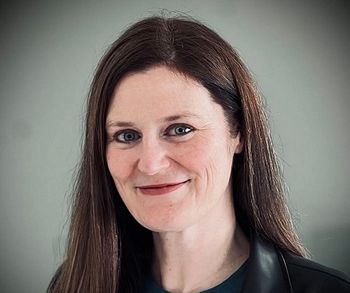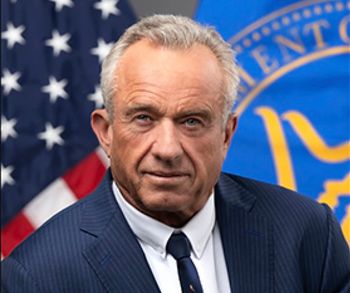
Here are 3 reasons for hospital executives to leverage technology for operational improvements | Viewpoint
Technology exists that can reduce administrative waste and its hefty price tag – a cause everyone can get behind.
It’s no secret that today’s healthcare environment is facing numerous challenges that can impact patient care and financial sustainability.
There are staffing challenges, rising costs and friction between payers and providers that necessitate immediate solutions. This is prompting many hospital leaders to explore ways to enhance patient care and improve their financial performance.
As an expert in case management with over 30 years in a hospital setting, I have firsthand experience identifying and addressing the pain points within utilization management (UM) – an area I believe is often overlooked within the revenue cycle when it comes to innovative tech solutions.
A key challenge with UM is efficiently and effectively prioritizing patient reviews to identify the most at-risk cases to ensure appropriate reimbursement. Due to the
As healthcare continues to move toward a digital-focused landscape, opportunities for improvement are vast – and the progress within UM has proven to have substantial impacts.
However, getting buy-in from decision-makers on new technology can be an uphill and lengthy battle. Knowing who’s responsible for implementation decisions – whether they are financial, technical, or executive leaders – and being able to demonstrate the value of proposed tools to each of the stakeholders is crucial.
When hospital executives are evaluating technology investments across the broader organization, it has been said that “
Here are three compelling reasons why.
1. Reducing administrative tasks increases job satisfaction
With burnout becoming more prevalent in the healthcare industry since the onset of COVID-19, we should seek opportunities to automate processes which could drive staff efficiencies.
For example, traditional criteria solutions relegate UM nurses to combing through the EHR to piece together a patient’s clinical picture. This is time-consuming, manual work that contributes to healthcare’s unnecessary administrative waste – a
With RN attrition already at an
2. Optimizing staff workflows accomplishes more with less
Healthcare utilization is still rebounding from pandemic levels, and it’s crucial to be efficient and do more with less. Fortunately, it’s possible to reduce lengths of stay while still achieving a high level of patient care.
Advanced healthcare technology solutions, such as those backed by artificial intelligence, can offer valuable information, analysis and forecasting to give case managers a better look at what’s driving their teams’ work.
Additionally, automation can remove manual components of time-consuming processes. Within utilization management, for example, automation can enable case managers to invest more time into tasks that directly affect patient health and well-being, such as care coordination, transitions of care, and discharge planning.
3. Enhancing precision achieves superior results
Determining medical necessity is both a complex and important aspect of healthcare administration and decision-making that comes with challenges.
While the goal is to ensure that patients receive the care they need while managing healthcare costs and resources effectively, there are no one-size-fits-all instructions on how to achieve this end goal. The challenges are exacerbated when working across internal and external teams.
Technology that augments clinical decision-making can standardize internal workflows and ensure everyone is prioritizing in the same manner.
Take for example a patient who is reviewed at 9 a.m. by a UM nurse who decides the patient should remain in outpatient with observation services. If their condition changes at 11 a.m., the UM nurse would not know unless they went back into the patient’s medical record, which isn’t always feasible in the fast-paced world of hospitals.
This lack of visibility means the opportunity to upgrade the patient will be missed until the next morning, adding hours to a process that could have been addressed in real time with AI-driven technology and processes in place.
Engaging critical stakeholders communicates value and guarantees success
Now that we’ve discussed the “whys” to support tech investments and the urgency with which our industry must approach process improvements, I’d be remiss to not touch on what comes next – best practices with implementation to quickly realize improvement gains.
Let’s say a hospital or health system decides to evaluate, then launch, a new technology – the decision can trigger many questions, and even fears, as staff consider how it may impact daily work. I’ve personally experienced this enough to stress the importance of enlisting a variety of key stakeholders in the evaluation process early on – identify who the technology will be helping in advance, beyond direct staff, and ensure they’re included.
By understanding users’ workflows and unique concerns, and how they and additional decision-makers measure success, you can communicate the anticipated benefits and how you're going to be able to positively impact their day-to-day to get buy-in.
These individuals can join you in conveying needs and anticipated returns to make a stronger case for tech investment across the broader organization. Part of this same group could later become “superusers,” a recommended way to ensure smooth implementation and cross-training to better manage staff attrition.
Case management is well known for having complex problems that require collaboration across all levels to solve them. Luckily, technology exists that can reduce administrative waste and its hefty price tag – a cause everyone can get behind – while expediting alignment and driving more partnership during these processes.
By communicating team needs, opportunities and expected benefits to key stakeholders, improving operational efficiency and financial performance across your team and organization is not only possible, it’s well within reach.
Kelly Layton is senior director of clinical engagement at XSOLIS.






































